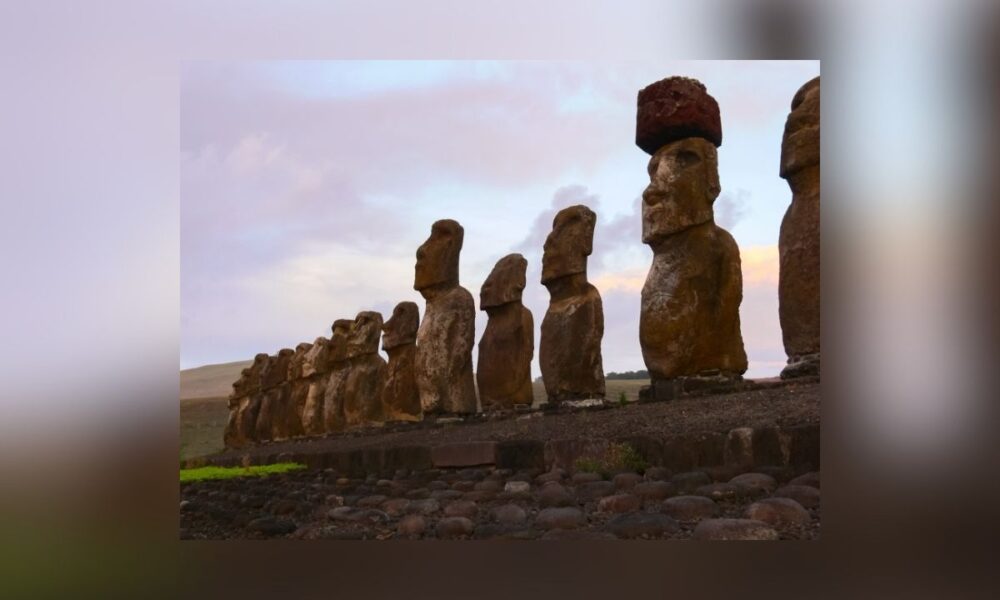The ancient moai statues of Easter Island, towering stone figures of Polynesian origin, may have been “walked” to their resting places, according to a new study that sheds light on a centuries-old mystery.
Published in the November 2025 issue of the Journal of Archaeological Science, the research by anthropologists Carl Lipo of Binghamton University and Terry Hunt of the University of Arizona builds on a 2012 experiment in which 18 people used ropes to “walk” a 4.35-ton moai replica 100 meters in 40 minutes, rocking it forward in an upright position. The technique challenged older theories of horizontal transport via sleds or rolling, which lack archaeological support.
The team surveyed 962 moai, focusing on 62 along ancient roads. These “road moai” share a D-shaped base and a forward lean of 6 to 15 degrees, designed for stability during rocking. Virtual 3D models showed their low center of mass aided transport, unlike finished moai with eye sockets carved at final sites.
“Once the moai are in motion, it is not at all difficult,” Lipo said, according to Live Science.
Using ropes 20 to 30 meters long, 15 to 60 people could initiate the “walk,” with five to 25 sustaining it, the study found. Pendulum dynamics made each 89-centimeter step efficient, allowing an average moai to travel 310 meters per hour. A 10-kilometer journey would take about 11,000 steps.
The island’s 4.5-meter-wide, concave roads likely stabilized the process. A statistical analysis revealed 51.6 percent of moai were clustered within 2 kilometers of the Rano Raraku quarry, suggesting many fell or broke during transport and were abandoned.
“What we found is the fact that statues were moved with very small numbers of people in an amazingly ingenious way,” Lipo told Live Science. He highlighted Rapa Nui oral traditions that claim the moai “walked” and noted the method’s lower labor requirements than horizontal theories.
Sue Hamilton, an archaeologist at University College London not involved in the study, called it “an ingenious and worthwhile contribution to the discussion” but cautioned that road moai differences might reflect ceremonial roles or varied craftsmanship.
“The current work by the authors further demonstrates the technical possibility of upright movement of the statues (moai), but it does not prove that it happened,” she said, per Live Science.
Lipo and Hunt countered that critics “have yet to offer plausible alternatives that account for the full range of evidence,” Live Science reported.


